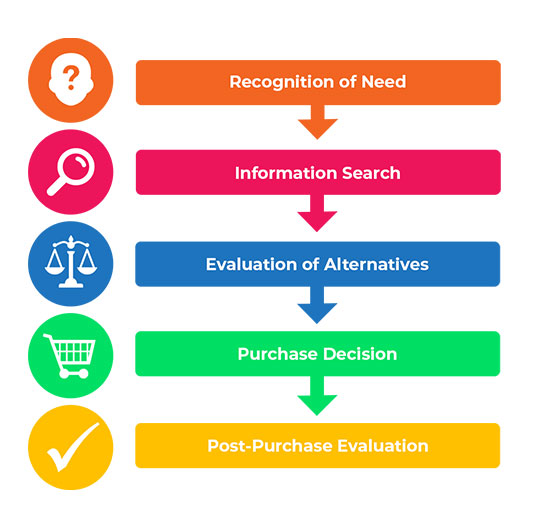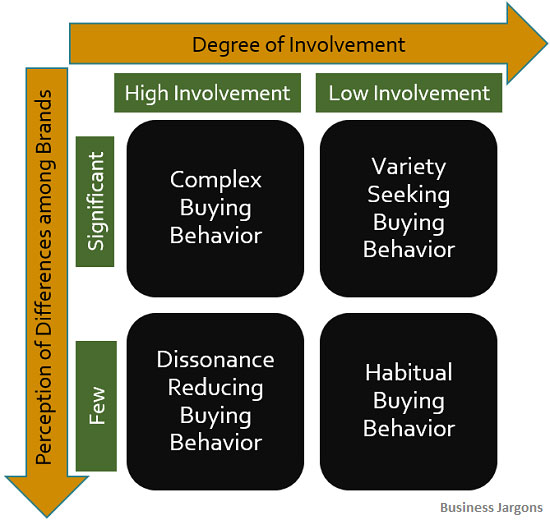From content marketing for manufacturing companies to standing out in a crowded marketplace, buyer behavior in manufacturing is the driving force behind a company’s overall marketing efforts.
Marketing for manufacturers used to depend on salespeople making in-person calls to woo businesses to purchase their products and services. Today’s manufacturers search for solutions online, and 70% will choose a company that provides an individualized customer experience. As a result, marketers must focus on digital marketing efforts that address their clients’ unique needs. Every aspect of a business’s digital marketing campaign must revolve around buyer behavior, from SEO basics for manufacturing and industrial companies to driving website traffic for manufacturing companies.
Keep reading to learn the ins and outs of buyer behavior in manufacturing and how to use this information to your advantage.
Key Takeaways
- Buyer behavior is the habits, preferences, and actions people take when making a purchase decision.
- From need recognition to post-purchase behavior, buyers typically work their way through a five-step process when making a purchase decision.
- A combination of risk and involvement leads to four types of buyer behavior, from extremely calculated decision-making to random selection.
- Buyer behavior will reveal patterns that can help shape your marketing strategy to ensure optimal results.
What Exactly Is Buyer Behavior?
Buyer behavior is the decision-making process and actions people take to purchase a product or service. It provides insight into why buyers make their purchases, giving clues to businesses that help shape marketing campaigns. Buyer behavior like habits and preferences can help advertisers make predictions about trends in marketing for manufacturing companies and can help you create a strategy that delivers optimal results.
Various psychological, social, cultural, economic, and personal factors impact buyer behavior and purchasing decisions. They typically involve these five steps:
- Need recognition: The buyer realizes they need a solution to a problem.
- Information search: The buyer looks for possible solutions and gathers details for all viable options.
- Evaluation of alternatives: The buyer weighs the pros and cons of each possible solution.
- Purchase decision: Armed with all the appropriate information, the buyer either buys the product they feel best suits their needs or delays the purchase until they find a better option.
- Post-purchase behavior: After the buyer makes the purchase, they evaluate their satisfaction with the product and their overall experience and decide whether they would recommend or buy from that company in the future.

When you understand buyer behavior in manufacturing, you can create custom materials that address your users’ specific needs. You can also reach them through their preferred channels and at the appropriate point in their customer journey. Delivering the right information to the right people at the right time can help increase your chance of conversions and generate more revenue for your business.
4 Types of Buyer Behavior in Manufacturing
Their involvement in the purchase decision most impacts buyer behavior. When prices are high, there’s greater risk, so a buyer is more active in the purchase. This balance of risk and involvement leads to four types of buyer behavior in manufacturing.
1. Complex Buying Behavior
This purchase scenario has a heightened sense of psychological or economic risk. Perhaps the item in question is an expensive piece of machinery. As a result, the buyer carefully considers all aspects of the purchase process. They conduct extensive research to ensure the product meets their needs, is worth the cost, and will ultimately solve their problem.
2. Dissonance-Reducing Buying Behavior
This behavior exists when people don’t conduct much research but rather focus on convenience and budget as deciding factors. As a result, they often have difficulty choosing between several similar products and are concerned about buyer’s remorse, regretting their decision after purchasing. This causes feelings of dissonance within them.
3. Habitual Buying Behavior
The habitual consumer typically has very low involvement in their purchase decisions. Whether they don’t want to take the time to research other options, or they don’t see a significant difference between brands, these shoppers tend to buy the same things over and over again. As such, they don’t conduct much research and make decisions based on past experiences alone.
4. Variety-Seeking Buying Behavior
Another low level of involvement, variety-seeking shoppers change brands simply out of curiosity or for a change of pace. They aren’t necessarily dissatisfied with previous purchases. They like to try new things. These consumers don’t usually put much thought or analysis into their purchases. They may make decisions on a whim.
Alt-Text: 
3 Buyer Behavior Patterns that Shape Marketing Strategy
Looking at your customers’ buyer behavior patterns can help you gain insights into what might resonate with your audience. Consider these three behavior patterns when developing your marketing strategy.
1. Past Purchases
See what products your prospective customers have purchased in the past. This can provide clues about what kind of equipment might interest them, their general needs, and what price point they’re willing to pay. You can understand:
- Quantity: Do they need bulk shipping?
- Availability: Are the items they need currently in stock?
- Purchase power: Can this person make purchase decisions for their company?
All this information can help shape a content marketing strategy that is relevant and meaningful to your audience.
2. Purchase Frequency
Learn how often prospective customers make a purchase and when. This can provide clues about how often they’re in the market for your products and at what point in the year you should contact them with marketing information. These details will also alert you to:
- Product need: How often do they go through their inventory?
- Customer lifestyle: What kinds of materials are they using and when?
- Client trends: What’s your client’s busy season, and when can you most effectively benefit their business?
When it comes to effective marketing, timing is everything. Knowing your customers’ purchase frequency can help you reach them with targeted messaging when they need it most.
3. Payment Method
Understanding how prospects pay for their purchases can tell a lot about their buyer persona. Discover whether your target audience prefers to shop in person or likes to pay online. If they want to open an account, there’s an opportunity for future purchases and upselling potential. A shopper’s preferred payment method can tell you a lot about their buyer behavior and reveal information about how to approach them for purchases.
Make Buyer Behavior Work for You
Shanahan Strategy is an experienced marketing agency that helps manufacturing and industrial businesses plan for growth and success. We help you build a strategic roadmap to drive more quality leads through your sales pipeline and generate more revenue for your business. Our effective digital marketing strategies can help build awareness, close sales, and deliver valuable insights to help shape your current and future campaigns.
Contact Shanahan Strategy today to learn how we can help you make the most of buyer behavior in manufacturing.

